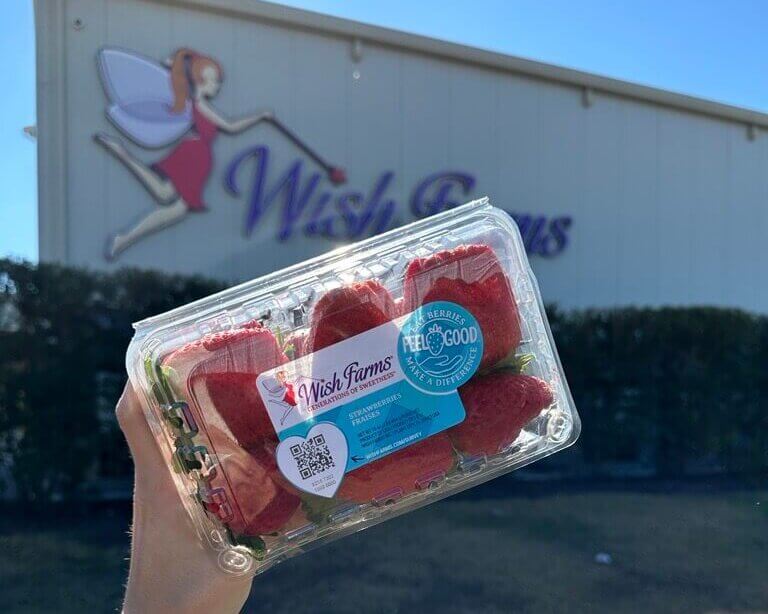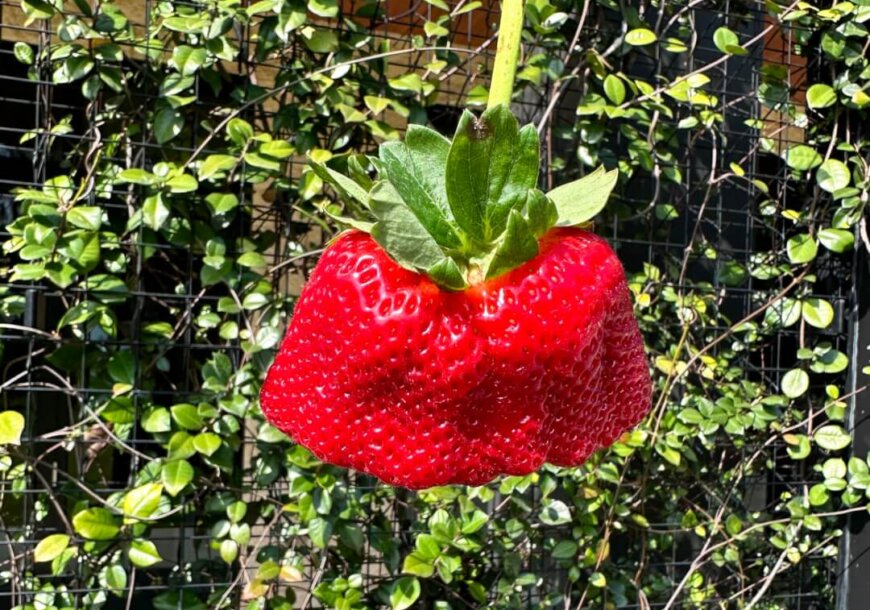Have you ever opened your container of strawberries and found an incredible “mega-berry” laying on top? We all know that strawberries come in many different shapes and sizes but, seriously, how does one berry become the size of three?! Science is the answer. And, you’ll be happy to know, you can enjoy that giant berry just the same as any other. Well, except you’ll need a few extra napkins for the strawberry juice that might run down your face when you take that first sweet bite.
 While strawberries are only harvested in a particular region for a portion of the year, the preparation and work that goes into the crop takes place year-round. The University of Florida plays a big role in this effort. Their Institute of Food and Agricultural Sciences (UF-IFAS) program is constantly researching and developing new varieties of strawberries that can succeed in Florida’s climate. As a result, we can continue to grow delicious berries even when conditions, such as weather, change.
While strawberries are only harvested in a particular region for a portion of the year, the preparation and work that goes into the crop takes place year-round. The University of Florida plays a big role in this effort. Their Institute of Food and Agricultural Sciences (UF-IFAS) program is constantly researching and developing new varieties of strawberries that can succeed in Florida’s climate. As a result, we can continue to grow delicious berries even when conditions, such as weather, change.
These breeds of strawberries are developed through cross-pollination to create a natural hybrid after the best strawberry traits are observed. As stated in Channel 10 News’ The Evolution of Gigantic Strawberries-It’s About Science, Not Pesticides, “ [Alicia Whidden from UF-IFAS] said there are several different factors breeders take into consideration, including flavor, how well the fruit ships, how it reacts to weather, whether the fruit is resistant to disease and, in some cases, size.” Therefore, those large, palm-sized, berries are simply a result of the natural combination of these factors, the weather, and the stage of the bloom cycle.
Rest assured, the “mega-berries” (or even those smaller, fun-sized ones) are not a result of pesticides, fertilizers, or GMOs. Instead, they’re a result of the fascinating science that goes into making sure you have the best, natural berries on your table each season.
For more information from the referenced article, click here.
















